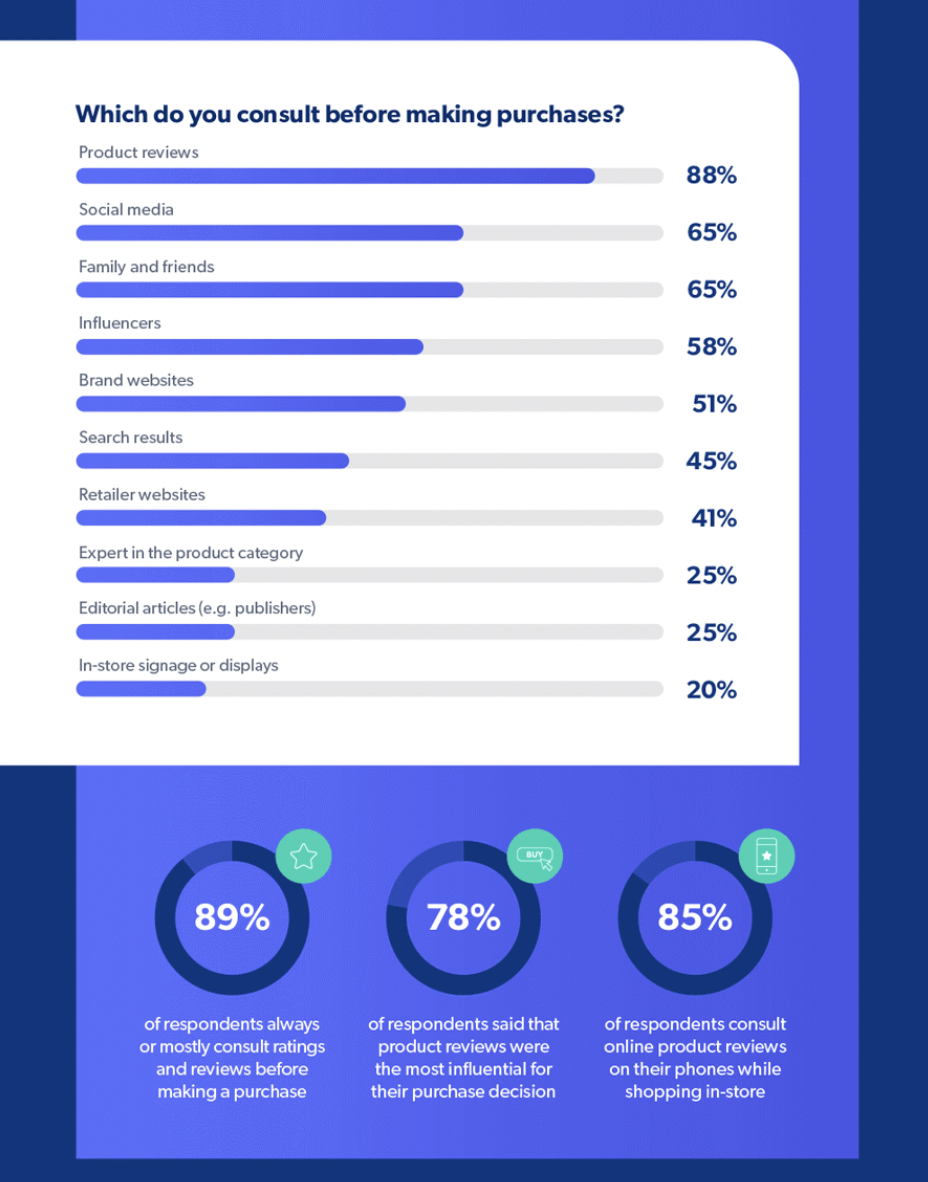Sampling Marketing — The Complete Guide
Oh, samples, the small gifts that help justify any Costco membership. You can get everything from a warmed pizza bite to a smoothie to hand lotion, all in one pass-through.
And don’t get me wrong, this strategy is an incredible tactic that can increase sales, in some cases, by as much as 2,000%. But there is much more to the sample marketing strategy than just enticing snacks and perks.
Product sampling marketing offers benefits to brick-and-mortar companies, online B2C and B2B brands, and everything in between. You can expand your reach, grow customer loyalty, and ultimately increase conversion and decrease churn rates. Sounds intriguing, right? Keep reading to learn how sampling marketing can help your company.
In this article, we will discuss:
This can manifest in a variety of forms, from Sephora’s free gifts with a purchase to HubSpot’s 14-day free trial.
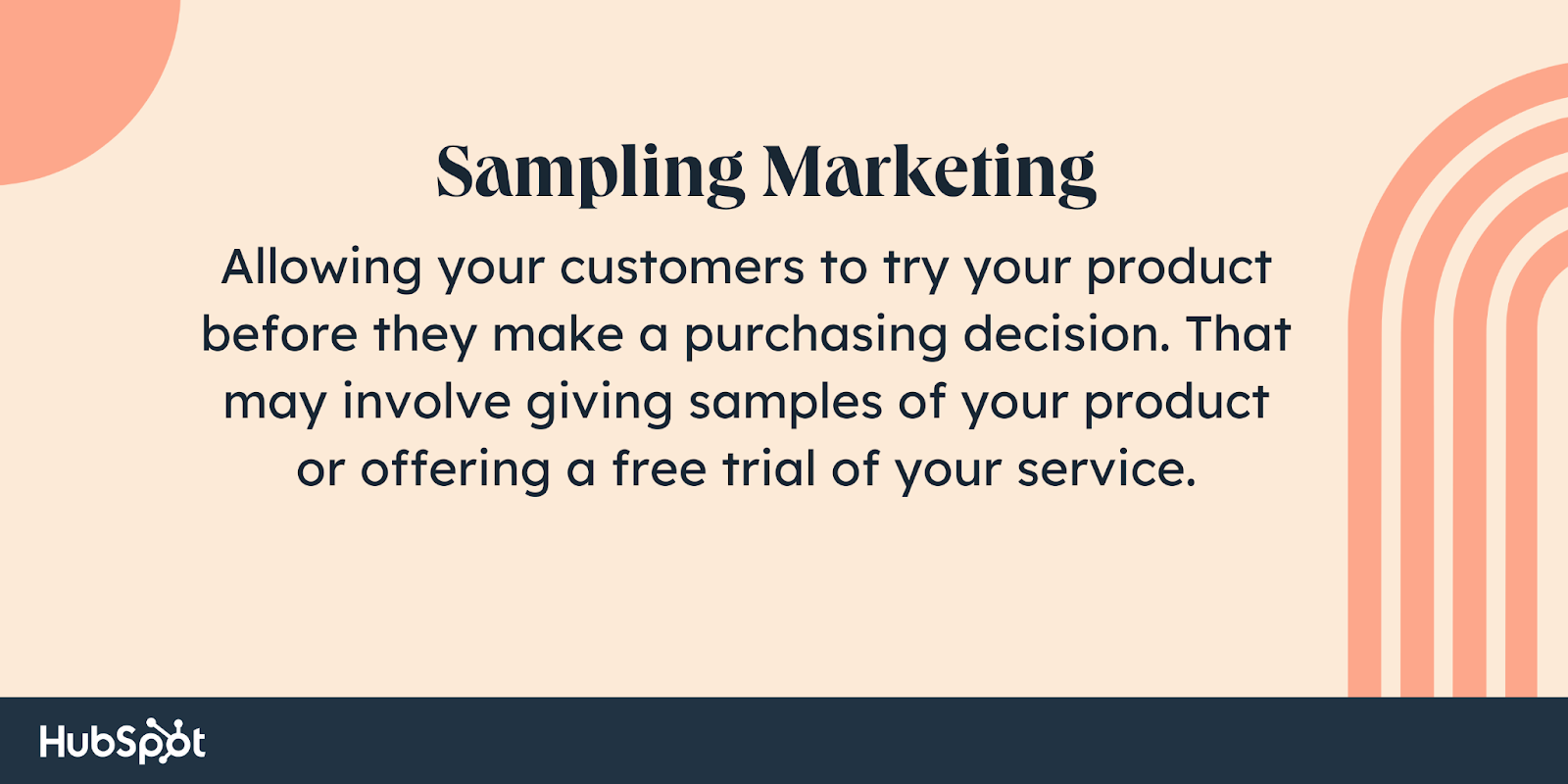
Why Sampling Marketing Works
The strategy behind sampling marketing is rooted in psychology and behavioral economics. Giving a customer a glimpse of your offering can show them the benefits before they buy.
Here are three major benefits of sampling marketing backed by research.
1. Reciprocity
As Dan Ariely, the modern-day king of behavioral economics at Duke University says, “Reciprocity is a very, very strong instinct. If somebody does something for you, you really feel a rather surprisingly strong obligation to do something back for them.”
At Costco, the impact of this theory is clear. The graph below shows the direct translation from samples to purchases.
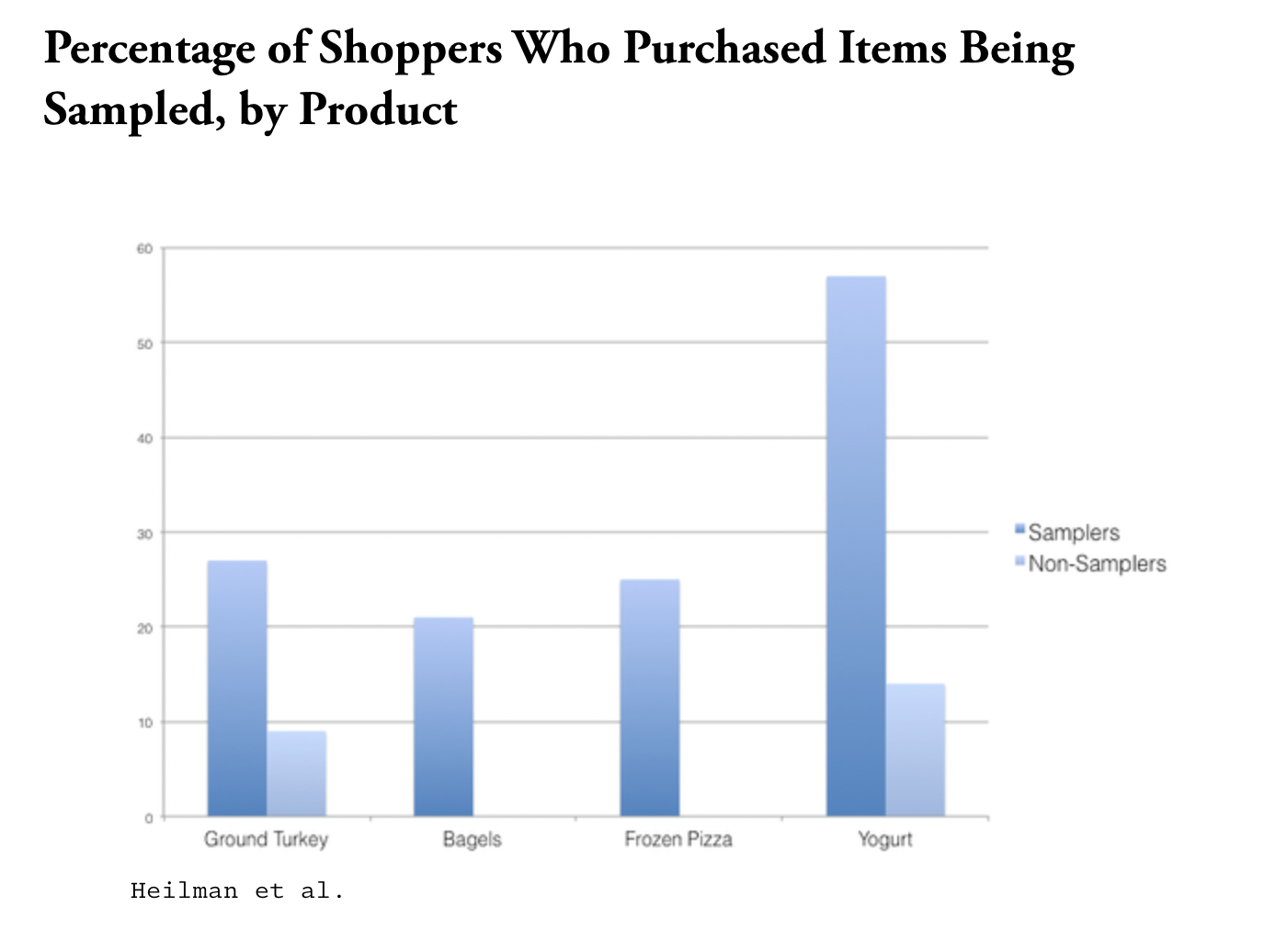
This same theory stands true for the digital space as well. Giving a potential customer the ability to test out the service before committing creates the same sense of reciprocated obligation.
When they create a relationship with your brand, there is then a further incentive for them to complete the transaction, increasing the number of sales your brand can achieve. You can then build a lasting connection with users that will keep them coming back.
2. Customer Loyalty
Cornell University professor Miguel Gomez conducted a study about wine tastings.
Results showed that customers who enjoyed a tasting were 93% more likely to spend an extra $10 at the winery. They were also highly likely to buy from the business again in the future.
This study furthers the notion that a free sample not only encourages the first purchase but also it promotes a sense of loyalty toward the company.
Customer loyalty is an indispensable tool for growth. In fact, B2B companies with referrals experience a 70% higher conversion rate. This sense of trust will further your business’ customer retention and help you reach new customers alike.
3. Loss Aversion
Sampling marketing works because of our innate human physiological fear of loss, no matter the size. Esteemed of behavioral economist Daniel Kahneman, dedicated much of his studies to this notion and claims that “the concept of loss aversion is certainly the most significant contribution of psychology to behavioral economics.”
Here, when one receives a free trial or sample, they are made to feel as though they own that product. They become much more reluctant to lose it once it’s in their possession. According to Kahneman, the pain of losing is almost twice as powerful as the pleasure of gaining.
Sampling Marketing Best Practices
How much do I give for free? How do I implement these free samples into my marketing strategy?
You’ll need to answer these age-old questions. But not to worry. These best practices can help you build the right sampling marketing strategy.
Find the sweet-spot quantity.
You have to find the sweet spot for your free offering. Don’t give too much, which would remove the customer’s need to purchase your product. Don’t give too little, or they won’t have the chance to try your offering thoroughly.
Databox found that over 40% of B2B SaaS companies have a free trial between 14-29 days.
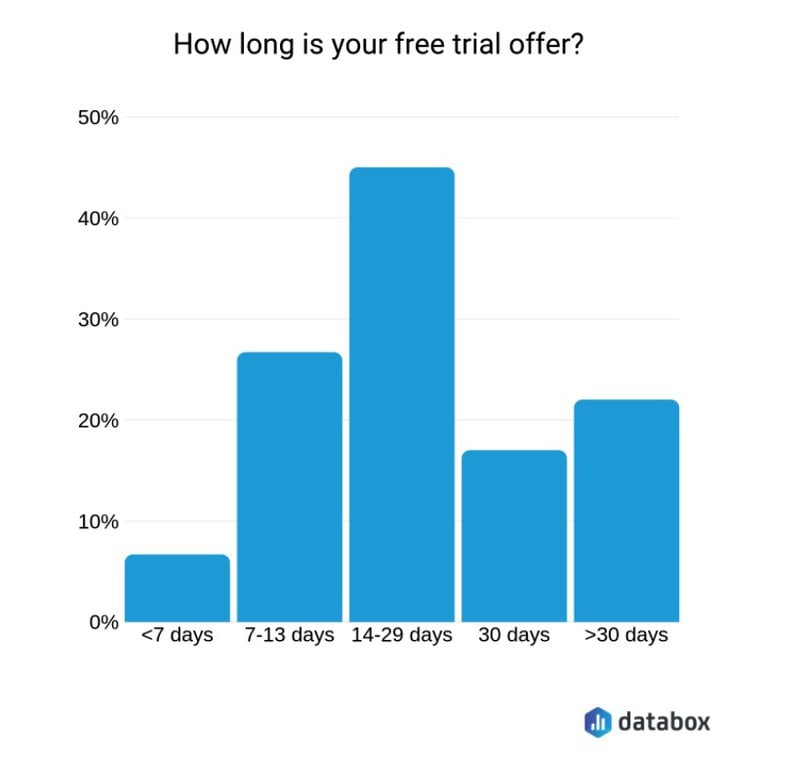
This timeline is often a sweet spot for software offerings. It’s long enough for users to see how the product can impact their bottom line. However, it’s not so long that users can accomplish everything before the trial is over.
Time-based models won’t work for physical products. For these goods, Shopify shares, “offer a sample that they can use at least two or three times … and customize your sample offering to fit the consumer profile.”
For example, an online news business may offer, on average, five articles a month before asking for a subscription payment.
Bolster new product launches.
The best way to spread the word about a new product is through the users themselves. Product sampling increases the number of users and sales while also promoting user-generated content marketing (UGC).
When these lucky users try out a product, they are more willing to review it and advertise it on their own due to their innate sense of reciprocity.
Today, 89% of shoppers check reviews before making a purchase. Get the word out about your new product through user-generated reviews to reap the benefits.
Use feedback to inform product development.
What better way to understand how your product works for your user than to ask them directly? By giving them a sample of your product for free, with no strings attached, they can try out the product honestly.
Take this opportunity to gather genuine feedback, user reviews, and ratings.
Find ways to tap new markets.
Over 70% of customers look for perspectives that reflect their own, meaning you need to find ways to market to the specific target demographics.
Through product sampling marketing, you can get your foot in the door to these market segments by speaking to them in a relatable way with your UGC strategies.
Sample Marketing Examples
There are thousands of stellar examples to guide your product sampling journey. Here are three case studies to inspire you.
Warby Parker
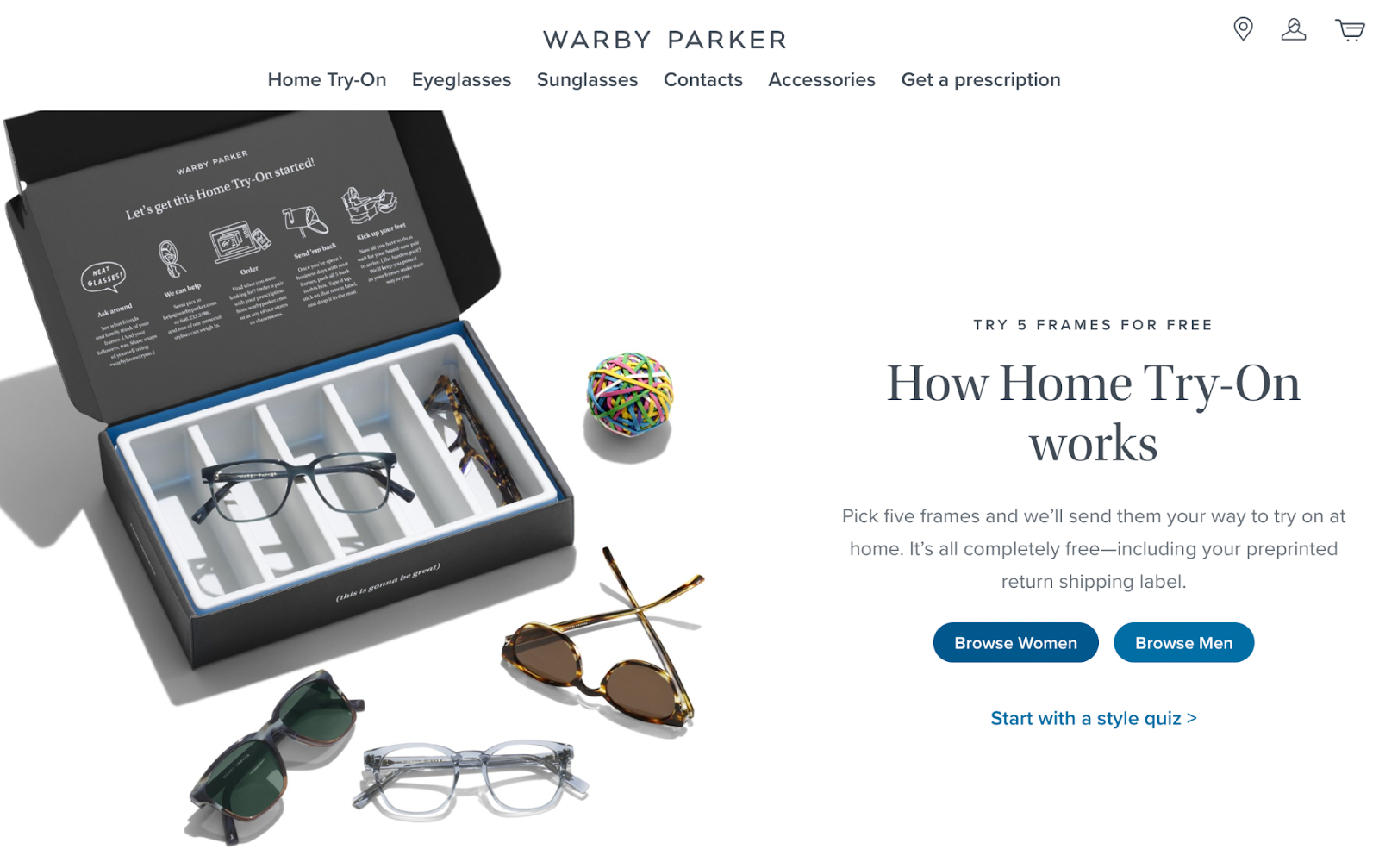
Warby Parker is a prime example of how sampling marketing allows the user to try before they buy. The modern, sleek, and trendy eyewear company allows you to choose any five frames to try on at your home for free.
Then, after five days, the customer can buy what makes them feel their best. The rest are shipped back (for free, of course).
After five days of wearing glasses that make me feel like Carrie Bradshaw from Sex and the City, I wouldn’t want to return them either! Warby Parker uses product sampling marketing exactly how it was intended — giving me a taste of the life I could have, but then taking it away before I get too comfortable in my Bradshaw era.
What we love: The personalization of their free samples. Customers can find the perfect frame and then actually use them in practice before committing.
Spotify
If you are an Apple Music user, it’s okay. We all have that friend and still love them. However, I hate to admit it, but Spotify may have you beat in more than a few ways, such as its personalized interface and accessibility.
Yes, Spotify does have a free tier, but it is definitely not as used as their Premium model. That’s why Spotify offers all of its users a three-month free trial to experience all that Premium has in store.
This free trial really does work. In 2019, they had 217 million active users and 100 million subscribers — meaning a 46% conversion rate.
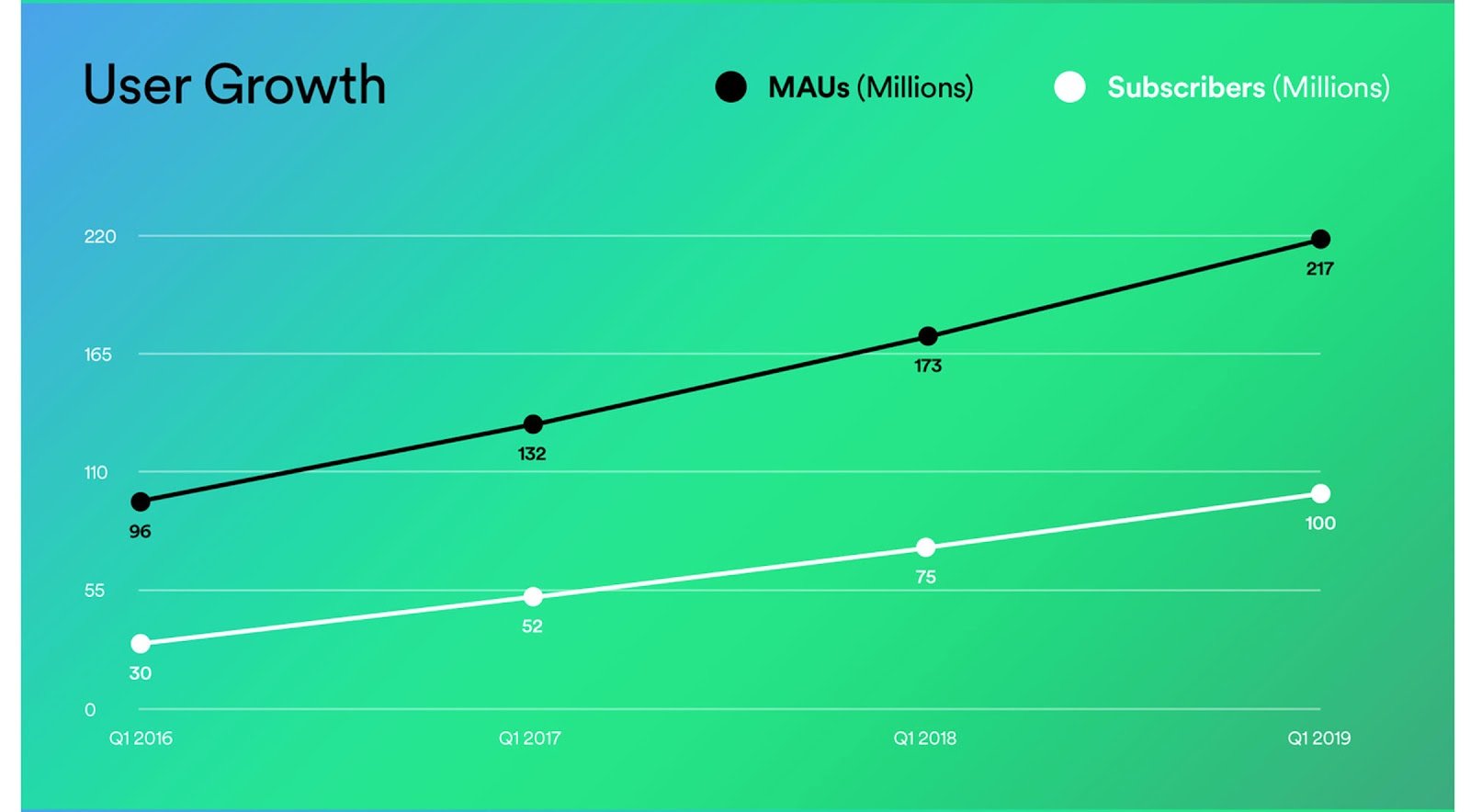
What we love: Spotify’s three months get you hooked. You’ve made an investment in the app by cultivating playlists that, after three months, you can’t part with. Once you lose that advantage, you can’t go back to the free tier again — with advertisements, worsened audio quality, and no exclusive release access.
Zoom

Whether COVID made you a Zoom fanatic or an avid Zoom hater, video conferencing is here to stay — and Zoom is at the forefront of that.
However, if you are just using a free personal account, you are limited to 40 minutes. Yesterday, I received an email to upgrade my account with the words: “Sick of the 40-minute limit? This holiday season, stay connected through it all — for free! Today only, claim your FREE MONTH of Zoom!”
What we love: Zoom uses seasons and holidays to target its promotions. The holiday season is a time when everyone wants to connect, and Zoom knows it. They are able to tug on our heartstrings and make us feel glad that they are making their service more accessible at a time when it is needed.
Making the Most of Samples
We’ve all made purchases after using a sample — whether that be Spotify, LinkedIn Premium, Costco, or Sephora. There are plenty of benefits to letting customers try a product, getting them hooked, then closing a sale.
Start small by offering samples of select products. Once you prove out your strategy, you can expand your sampling marketing.
![]()


![→ Download Now: Market Research Templates [Free Kit]](https://no-cache.hubspot.com/cta/default/53/6ba52ce7-bb69-4b63-965b-4ea21ba905da.png)
